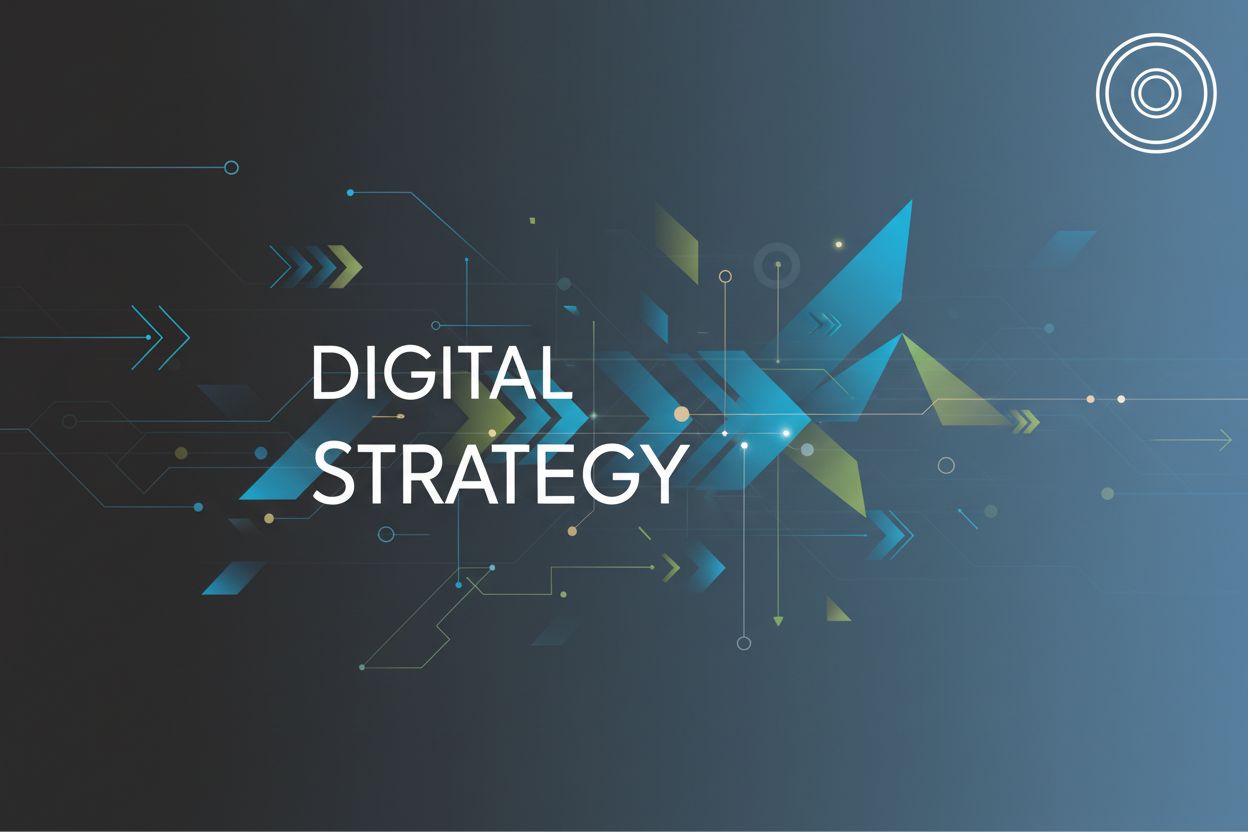Understanding Location-Based Marketing in Digital Strategies
TL;DR
What is Location-Based Marketing and Why Does It Matter?
Location-based marketing, huh? Seems like everyone's buzzing about it. But what is it exactly, and why should you, as a brand manager or cmo, even care? Turns out, it's more than just sending coupons to people near your store – it's about creating relevant experiences.
At its core, location-based marketing (lbm) uses geolocation data to target potential customers. We're talking about data from smartphones, tablets—anything that can pinpoint where someone is. (User Beware: Your Smartphone Is Tracking Your Every Move) The goal? To deliver personalized content that resonates with them, right when they need it. Think about it: a coffee shop sending a "beat the afternoon slump" offer to people near their location? Boom.
Here's why it matters:
- It's all about relevance. if you are a brand manager, lbm is about delivering the right message, to the right person, at the right time and place. If you are a cmo, lbm is also about integrating this with your overall digital transformation and marketing strategies.
- Personalization is key. This isn't your grandma's mass marketing – it's about creating tailored experiences, like alerting a prospect that a product they've been eyeing is stocked in a nearby store, making it easy for them to grab it right away.
- It bridges the online and offline gap. Lbm isn't just a standalone tactic; it's about connecting your digital efforts to real-world customer interactions. It’s how you make your digital transformation efforts tangible to the customer.
Consumers expect personalized experiences now. (The value of getting personalization right—or wrong—is multiplying) We're all walking around with location-aware devices, and we expect brands to use that data responsibly to make our lives easier—not creepier. Location is a key component of mobile context, meaning where someone is influences what they might need or want.
- Meeting expectations: People want relevant offers and information when and where they need it. Miss that mark, and you risk being ignored or, worse, annoying your target audience.
- Mobile is king: it's just a fact. People are glued to their phones, and location services are increasingly common. Ignoring this trend is like ignoring a giant neon sign screaming, "Opportunity!"
- Competitive edge: if you're not using lbm, your competitors probably are. And they're likely delivering more targeted, relevant messaging that's winning over customers.
Imagine a healthcare provider using lbm to remind patients leaving the hospital to process their claim in the app. Or a retailer using geofencing to target users near their stores to encourage them to stop in a shop. these are real-world applications that can drive tangible results.
So, how does lbm fit into your grand digital strategy? It's about supporting digital transformation initiatives by connecting the online and offline worlds. Plus, it enhances customer engagement across multiple touchpoints, and improves roi by being able to measure location-based analytics. Location-based analytics can include things like foot traffic analysis, how long people stay in your store, and conversion rates from your location-based campaigns, all helping you see what's working.
Next up, we'll dive into the nitty-gritty of how lbm actually works, including the tech and tactics you need to know.
Key Types of Location-Based Marketing Techniques
Okay, so you're thinking about location-based marketing? It's not just about spamming people with ads because they're near your store – there's actually some finesse to it. Here's a few ways brands are using location data to get smarter and more effective.
Geo-targeting is like using a map to say, "Okay, anyone in this city sees this ad." It's not laser-focused, but it's great for getting the word out to a specific region. This works by looking at ip addresses, which are unique identifiers for devices connected to the internet. These ip addresses can often be traced back to a general geographic location, like a city or region. marketing Evolution mentions this as a way to connect devices to locations.
- Think of a national retailer running a campaign for winter boots. They might target the northern states with ads showing off their warmest styles. Or maybe, a healthcare system promoting flu shots in regions where cases are spiking. It's broad, but effective for localized needs.
Geo-fencing gets way more precise. You draw a virtual fence around a location – say, your competitor's store – and when someone enters that area, bam, they get an ad. It’s great for retail promotions.
This flowchart illustrates how geofencing works: a user enters a defined virtual boundary, which then triggers a specific action, like sending a targeted ad or offer.
- Imagine you're running a coffee shop. You could set up a geo-fence around the train station and offer a discount to commuters during the morning rush. Or, as clevertap notes, event organizers might use geo fencing to send exclusive directions and travel itineraries to fans as they enter the city of the venue, enhancing the event experience, and building brand loyalty.
Beyond these, there's proximity marketing, which uses technologies like bluetooth beacons to send hyper-localized messages to devices when they are very close to a specific point of interest, like a product display in a store. And geo-conquesting, a more aggressive tactic where you target users who are currently within a competitor's location and serve them ads designed to lure them away.
Next up, we'll explore how these strategies play out in the real world and what you need to consider before diving in.
Benefits of Location-Based Marketing for Brands
Location-based marketing – is it just another flash in the pan? Nope, and here’s why: it's about getting personal with your audience, right where they are. Think of it as the digital version of knowing your customers by name.
Delivering highly relevant notifications and recommendations is key. Imagine a music lover walking into a record store and instantly getting a notification about a limited-edition vinyl release. It's about anticipating their needs, not just pushing products. Or consider a financial institution alerting a customer with an expiring c.d. as they walk into a branch, offering renewal options.
Capturing feedback at the right time and place can be invaluable. Instead of generic surveys, hit 'em with a quick question right after they leave your store. How was their visit? What could be better? Real-time feedback is gold, honestly. Think about google maps asking you to rate a recent visit to a store - it's seamless and timely.
Removing friction from user journeys with location-aware assistance is a game-changer. Picture this: a health insurer reminding a patient leaving the hospital to process their claim in the app. No paperwork, no phone calls, just easy peasy!
Increasing brick-and-mortar traffic with location-based promotions is a classic, but it works. Send a special 20% off coupon to customers within a mile radius to get them through the door. It's that simple!
Highlighting convenience and the value of in-person experiences matters. LBM helps here by providing timely offers that encourage immediate in-store visits, reminding folks what they're missing by shopping online. the smell of fresh coffee, the touch of new clothes, the advice from a real human.
Enticing nearby customers with timely and relevant offers is all about the hook. Capture their attention with a tempting discount or a unique in-store event!
lbm is not just about blasting ads; it's about creating meaningful connections. Next, we will dive into audience targeting and segmentation and how you can get the most out of your campaigns.
Addressing Privacy Concerns and Ethical Considerations
Location-based marketing is cool, but let's face it: it can feel a little unsettling, right? No one wants to feel like they're being stalked just because they walked past a store. So, how do you use this without turning off your audience?
First off, transparency is key. You gotta be upfront with people about why you're tracking their location. Don't bury it in the fine print.
Opt-in is the only way to go. Make it super clear that users are choosing to share their location. Don't make it the default, and don't guilt-trip them if they say no. Let folks know, that they can revoke the access at anytime.
Explain the benefits. Tell users what they'll get out of sharing their location. Will they get exclusive deals? Personalized recommendations? Make it worth their while!
Give users control. Let them tweak their privacy settings. Can they pause location sharing? Limit it to certain times of day? The more control they have, the more comfortable they'll be.
Oh, and don't even think about ignoring gdpr or other data protection laws. That's a one-way ticket to legal trouble. Work with your legal team to make sure you're following all the rules.
Building digital trust is a marathon, not a sprint. Next up, we'll dive into how to segment your audience for maximum impact.
Implementing a Successful Location-Based Marketing Strategy
Alright, let's talk about making this location-based marketing thing actually work, shall we? It's not just about having the tech; it's about having a plan. Think of it like baking a cake – you can't just throw ingredients together and hope for the best; you need a recipe.
First things first: what do you want to achieve? Is it more foot traffic? Higher conversion rates? More app engagement? You gotta define SMART goals – Specific, Measurable, Achievable, Relevant, and Time-bound. Oh, and don't forget those key performance indicators (kpis) to actually track if you're hitting those goals.
- For instance, a healthcare provider might aim to increase app usage by 20% among patients leaving the hospital within one month. The kpi? Number of patients processing claims via the app.
- Or a bank aiming to increase branch visits by 15% in the next quarter. The kpi? Number of customers visiting a branch after receiving a location-based promotion.
Not all techniques are created equal. What works for a hip coffee shop might not work for a financial institution. Consider your budget, your resources, and your target audience. If you're on a shoestring budget, beacon technology might be out of reach, so stick with geo-targeting.
Don't just set it and forget it. Track your metrics – foot traffic, conversion rates, engagement – and see what's working and what's not. Is that coupon code not driving enough visits? Tweak the offer! Is your messaging falling flat? Revamp it! This tracking directly helps you adjust your strategy to better meet those initial SMART goals and KPIs we talked about.
Lbm shouldn't be a siloed effort. Make sure your messaging is consistent across all channels – email, social media, everything. It's about creating a seamless, holistic experience for your customers.
So, now that you know how to make lbm work, let's talk about audience segmentation.
Real-World Examples of Effective Location-Based Marketing
Location-based marketing? It's not just sending random ads; it's about being smart. Let's look at how brands use it in the real world!
Starbucks gets it. They send promotions to folks near their stores. The goal? To nudge you in for a coffee or snack. It's a location data play to boost those foot traffic numbers, and you know what? It seems to work!
Burger King got feisty with their "Whopper Detour" campaign. As marketing Evolution mentions, geo-conquesting is a strategy that uses location data to divert prospects away from competitor locations. They offered discounted Whoppers to people near McDonald's. Talk about a creative way to steal some market share, right?
Burger King used geo-conquesting to great effect, diverting would-be McDonalds customers back to their own restaurants. Consumers were encouraged to download the Burger King app. When they came within 600 feet of McDonalds, the Burger King app sent a promotion for a 1 cent whopper, and navigated customers to the nearest location.
Tourism boards can be pretty clever with location-based marketing. They target people visiting one place to convince them to visit another. Imagine seeing ads for Charleston, SC, while you're vacationing in Savannah, GA (as wordstream notes). This targeting is often achieved through mobile ad platforms that leverage location data from travel apps or other services people use while on the go. It's about building awareness and driving sales for a new destination.
So, what does this all mean for your digital strategy? Well, it's about getting creative and thinking about how location can make your marketing more effective.




